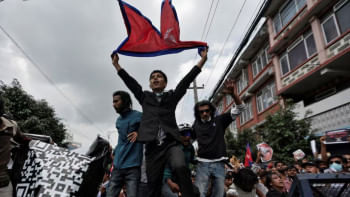Beza developing 3-phase plan for economic zones

The Bangladesh Economic Zones Authority (Beza) is developing a comprehensive three-phase implementation plan to develop economic zones across the country, ensuring balanced industrialisation, employment generation, and sustainable infrastructure development.
As part of a draft "National Master Plan of Economic Zones", Beza is prioritising establishing 20 economic zones by 2046, strategically phasing the implementation for resource optimisation and to attract local and foreign investment.
Beza disclosed this during a workshop on "Economic zone prioritisation and phasing, offsite infrastructure planning and development mechanism" at its office in Biniyog Bhaban at the capital's Agargaon yesterday.
According to the master plan, which is currently being formulated through financing from World Bank, the phased approach helps mitigate challenges related to land acquisition, infrastructure readiness, and investor confidence.
The first phase, spanning from FY25 to FY30, will prioritise economic zones that are already under development or at an advanced planning stage
This in turn ensures that economic zones develop in a structured and sustainable manner, states the master plan.
Only 10 economic zones have become operational since Beza rolled out a massive industrialisation plan in 2015.
Of the 10 economic zones, two – the National Economic Zone in Chattogram and Sreehatta Economic Zone in Sylhet -- are government-run while eight are under private management.
The private ones are City Economic Zone, Meghna Industrial Economic Zone, Meghna Economic Zone, Hoshendi Economic Zone, Abdul Monem Economic Zone, Bay Economic Zone, Aman Economic Zone, and East West Economic Zone.
According to a Beza report, the 10 economic zones employ around 60,000 people. Some 7,000 people are working in government-run zones and 53,000 in the private zones.
Products worth $14.47 billion were produced in the 10 economic zones in the last fiscal year of 2022-23, it said.
Addressing the workshop, Ashik Chowdhury, executive chairman of Beza, reaffirmed his commitment to turning the master plan into a blueprint for success, driving growth, innovation, and sustainable industrialisation.
"Whenever I am given a big project, I know it is a huge responsibility. There are many challenges, but I see them as chances to learn and grow," he said.
"Beza has grown because of hard work, good planning, and always aiming for the best."
Speaking about Bangladesh's economic growth, Chowdhury said, "A long time ago, we chose Narayanganj as an important place for development. We made that decision after careful study, and now we see the results.
"We are creating a space where businesses can succeed, new ideas can grow, and young people can dream big," he added.
Beza is not just building economic zones, it is shaping the future of Bangladesh, he said.
"We must create more jobs, grow our economy, and make Bangladesh even stronger. Let us work together for a better future," Chowdhury said.
Gayle Martin, country director of World Bank, emphasised the importance of rationalising economic policies to foster sustainable growth.
From the international financial institution's perspective, a well-functioning private sector is crucial for innovation, entrepreneurship, job creation, and sustainable management of natural resources, she said.
World Bank has been supporting Bangladesh in its economic progress, analysing growth trends, and enhancing policy frameworks, she said.
In collaboration with the International Finance Corporation, World Bank is preparing a private sector diagnostic, set to launch in the coming weeks, Martin informed.
According to her, another critical area is tax policy and administration. Bangladesh has one of the lowest tax-to-GDP ratios in the world and tax exemptions account for 6 percent to 7 percent of the GDP.
Rationalising these policies is essential for fiscal sustainability, she emphasised.
While the strong growth trend of the past has lost steam, strategic private sector investment can revitalise the momentum, said Martin, adding, "The World Bank remains committed to supporting structural reforms that maximise economic zones' impact."
According to a presentation on the master plan, the first phase, spanning from FY25 to FY30, will prioritise economic zones that are already under development or at an advanced planning stage.
Beza is focusing on the construction of roads, power supply, water management, and telecommunications to attract investors.
It is also offering incentives and ensuring a "favourable" business environment by focusing on select industrial sectors such as agro-processing, textiles, and light engineering due to their low capital requirement and high employment potential.
These zones being prioritised have already been provided land, face minimal legal disputes, and have high investor interest, making them ideal for early implementation.
By 2030, these zones are projected to generate over 300,000 jobs and contribute significantly to export earnings, thereby strengthening Bangladesh's position in global trade.
The second phase, running from FY31 to FY35, will focus on introducing large-scale industries such as automobile manufacturing, pharmaceuticals, and heavy engineering.
In this phase, railway and expressway connectivity will be strengthened, and more public-private partnerships (PPP) and government-to-government (G2G) collaborations will be promoted.
Work is currently underway for the issuance of legal and environmental clearances for the land of these economic zones, and by 2035, these are expected to house large-scale industrial parks that will contribute to Bangladesh's growing manufacturing and export sectors.
The final phase, extending from FY36 to FY46, aims to transform Bangladesh into a global industrial hub by introducing AI-driven logistics, automated factories, and IoT-based infrastructure.
It will set up green economic zones with eco-friendly policies, renewable energy, and circular economies.
In this stage, specialised clusters will be created to compete with global industrial zones in Vietnam, India, and China.
The master plan states that despite efforts toward structured rollouts, land acquisition issues, environmental regulations, and policy inconsistencies remain key challenges.
Through successful implementation, the master plan seeks to transform Bangladesh into a regional industrial powerhouse, creating millions of jobs and boosting economic diversification beyond Dhaka and Chattogram.

 For all latest news, follow The Daily Star's Google News channel.
For all latest news, follow The Daily Star's Google News channel. 







Comments